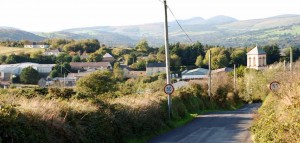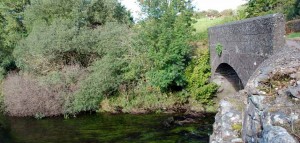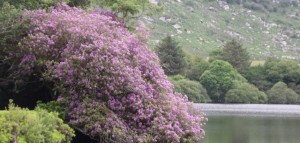“Welcome, O life! I go to encounter for the millionth time the reality of experience and to forge in the smithy of my soul the uncreated conscience of my race.”
(James Joyce, A Portrait of an Artist as a Young Man)
This collection of newly composed tunes is a portrait of an artist whose medium is traditional Irish music, and through his music Connie O’Connell reveals himself as an intuitive, sensitive, refined, honest, generous and unassuming artist.
Composing music in the traditional Irish idiom is an inherently artistic process. The new melody can be a concentrated expression of a composer’s own experience and emotions. It draws from the composer’s subconscious: an accumulative cacophony of sounds heard, overheard, listened to, played, enjoyed, or even reacted against. And like any art form, the artist’s personality, sensibilities and preferences define the new body of work.
Yet, this is just the beginning for newly composed tunes. Inspired by the canon of traditional music, once shared, each tune enters a new phase as it moves from the individual to the communal. How many sets of fingerprints are found on old ‘classics’ such as ‘The Bucks of Oranmore’ or ‘The Gold Ring’? Handed down and passed around, these tunes undergo changes not dissimilar to the way language evolves. And nowadays, through online access, a newly composed tune by Connie could leave Cill na Martra today and be played in sessions in Sliabh Luachra or Dublin or Havana before long! Who knows where any of his tunes will be played? What is certain is that the integrity of approach employed by Connie is exemplary. Devoid of mercenary considerations or commercial motives, this music is borne of sincerity, contentment, and high aesthetic value.
Connie’s total immersion in traditional music gives his tunes an organic flavour. They are at one with the core repertoire as they grow from within the traditional Irish music canon and feed back into that core repertoire just as the individual reinvigorates the collective store. For Connie, the past body of traditional music is not a hefty and inescapable ancestral encumbrance but rather an inexhaustible resource from which to forge new melodies.
To be creative within intangible or unarticulated structural and stylistic parameters requires a deep understanding of the underlying patterns and forms associated with traditional Irish music. These must be felt and embodied rather than merely articulated verbally.
The process of composing a new tune is not necessarily akin to taking to a blank canvas. What artist arrives without influences? The poet Theo Dorgan wrote: “It is literally not possible to engage with the present of a language, to write in a language, without being informed by the past of that language.”[1] Drawing inspiration from past and present traditions and practices is not unique to newly composed ‘traditional’ music. The celebrated classical violinist and composer Fritz Kreisler carried forth the tradition he inherited while simultaneously creating a new repertoire which was sympathetic to the parameters of that tradition. He wrote:
Nothing can express music but music itself. Tradition in interpretation does not mean a cut-and-dried set of rules handed-down; it is, or should be, a matter of individual sentiment, of inner conviction. What makes one man an artist and keeps another an amateur is a God-given instinct for the artistically and musically right. It is not a thing to be explained, but to be felt. There is often only a narrow line of demarcation between the artistically right and wrong. Yet nearly every real artist will be found to agree as to when and when not the boundary has been overstepped. Sincerity and personality as well as disinterestedness, an expression of himself in his art that is absolutely honest, these, I believe are ideals which every artist should cherish and try to realise.[2]
To my sensibilities, Connie O’Connell embodies these ideals as an artist and as a man, in his sincerity and honesty, in his personality and humanity, and in no small amount of talent. His compositions feature many fundamentals associated with Irish traditional music structures, such as eight-bar phrases, mixolydian, dorian, and aeolian modes, and archetypal patterns and rhythms from dance music. We, the practitioners of this music, are aware of these underlying fundamentals, though we often feel the inadequacy of labelling or analysing our music in this way.
The titles of Connie’s tunes also tell us a lot about Connie the man. His family, locality, friends, tradition, moments in time, and nature are celebrated, the artist’s work reflecting his life experiences and values.
When listening to tunes such as ‘The Daisy Field’ I find myself thinking: “Why didn’t someone compose that before?” It brings to mind the following saying attributed to Michelangelo: “Every block of stone has a statue inside it and it is the task of the sculptor to discover it.” To my mind, Connie’s compositions are so in sync with the existing canon of traditional music that you get a sense that his tunes almost reveal gems long hidden within the uncreated collective conscience. In his moments of creative inspiration, Connie creates tunes that sound, for want of a better word, almost ‘obvious’. They simply feel right. As one musician said to me: “That one sounds like it’s been around forever.” I say this as a sincere compliment as these melodies sound both old and new and therefore, like great art, are full of apparent contradictions. This is Connie’s true achievement as it can be very difficult to create new, fresh and beautiful melodies within the evolved parameters of traditional music.
The great nineteenth century collector, P.W. Joyce, wrote that the tradition of composing traditional music “began to decline in the eighteenth century; flickered on fitfully into the beginning of the next; and finally extinguished in 1847, in the year of the Great Famine.”[3] There were disruptions to the tradition, and there was almost a silence. Diffident, unassuming composers anonymously released their tunes into the wild without announcing their arrival. There was a time when traditional musicians were reluctant to admit to having created new compositions for fear of being labelled “a bit uppity” or “getting above one’s station.” ‘Closet composers’ were content to let their melodies sail away anonymously on their journey into the collective. Many such tunes ended up being wrongly attributed to other composers. We now live in a period in which the art of composing new melodies in a traditional style is undergoing a renaissance. Within Connie’s locality alone there are some very fine composers who celebrate their life, family, friends, locality, memories and experiences through melody. I believe we have arrived at a juncture when traditional musicians now create new music, making new reels, jigs, hornpipes, polkas, slides, barn dances, not as genuflections, not as empty signs made in the name of a tradition, but as the melodies of a free, diverse and living tradition. This is the new music of traditional artists made for traditional artists, the music for communal sessions and social music making.
Connie the composer is sincere rather than sentimental. He is also practical. The new melodies are playable, being within the grasp of the competent learner as well as being attractive to leading performers. There is no pretence of a mystic persona here as Connie seeks something much more humble, more wholesome, and deep from his craft. In terms of taste, repertoire, and his sustained passion for music, Connie is one of the most highly regarded traditional fiddle players in the country. Here is a musician’s musician and an artist who never succumbs to cheap stunts – straight up, no nonsense, serious substance, all carried lightly. Upon hearing about Connie’s latest compositions, my father, Mick O’Connor, lit up and said to me: “I bet you they’re damn good! He always oozes class.”
It has been all too rare in our tradition to have a composer share performances of his or her own compositions. These recordings of Connie and his daughter Áine are a unique gift to our community. Áine displays an innate understanding of her father’s music. She and Connie track each other so closely that they become almost indistinguishable from one another, uniting almost as one voice.
Traditional music passes through to us as a living stream. Concerted efforts to shape its course through discourse can be in vain. Practitioners choose what to play, what becomes current, and what is left aside. To hear one’s own composition played in a session, or played by a musician of integrity at the forefront of the tradition, must be one of the most rewarding stamps of approval to receive. This is an endorsement by one’s peers, that the tune lives and breathes and can be carried forth for upcoming generations. Ó lámh go haraile, ó bhéal go béal. Some of Connie’s tunes, such as ‘The Torn Jacket’, have already entered the canon, being widely played and enjoyed. More of Connie’s gems await us, these special offerings made to our living tradition. So it’s time to do our bit. Let’s listen, play, share and enjoy. Mo cheol thú, a Connie.
Liam O’Connor, 2014

Liam O’Connor, one of Ireland’s leading fiddle players, was born into a musical family in Dublin. During his youth, Liam was taught by Séamus Glackin and won several All-Ireland and Oireachtas fiddle titles. He was awarded TG4 Young Musician of the Year in 2002. He has performed as a soloist and in duets with Liam O’Flynn, Noel Hill and Harry Bradley among others. In 2009, he released a critically acclaimed CD entitled “Dublin Made Me” with uilleann piper Seán McKeon.
In 2009, he secured first-class honours in a graduate diploma in Irish Folklore in the University College Dublin Delargy Centre for Irish Folklore and Linguistics and the National Folklore Collection. During the course of his studies, Liam was awarded two prestigious scholarships: Scoláireacht Mháire Nic Néill and Scoláiracht Dhónaill uí Mhoráin. He worked as a researcher of traditional songs in the Irish language for the Royal Irish Academy’s Doegen Web Records Project. He has taught as a guest teacher on undergraduate and post-graduate courses at the Irish World Academy of Music and Dance, Limerick, and in Dublin Institute of Technology, Dundalk Institute of Technology and University College Dublin . He has also taught and performed at numerous Irish and international music festivals such as Scoil Samhraidh Willie Clancy, Scoil Acla, Tocane and many more. He has served as a board member on the TG4 Gradam Ceoil Selection Panel, on the board of the Irish Traditional Music Archive and as honorary secretary of An Cumann le Béaloideas Éireann/The Folklore of Ireland Society.
Having been awarded a Master of Letters for his research thesis entitled “Aspects of oral tradition in the Life and Works of P.W. Joyce”, Liam has given lectures on Joyce at Na Píobairí Uilleann, the National Folklore Collection, the Chris Langan Festival, Toronto, and Scoil Samhraidh Willie Clancy.



